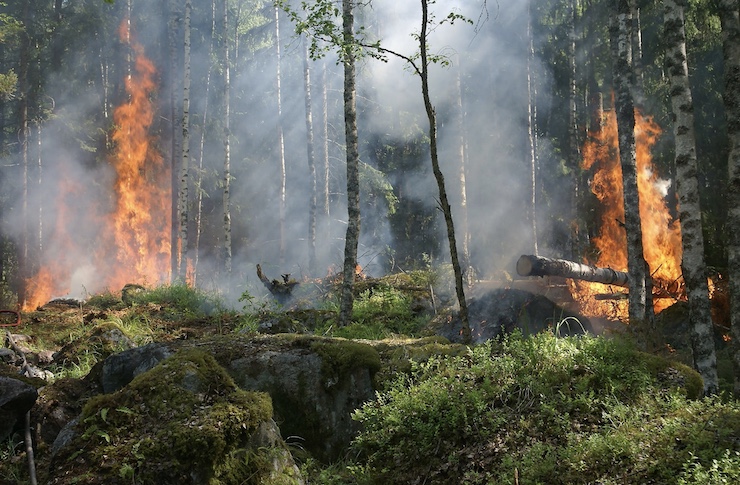
In the past few years, the world has seen a steady uptick in wildfires. These fires have become more difficult than ever to contain, partly because having the resources to extinguish them is often limited. For many large wildfires, like those seen in California, Australia, and the Amazon Rainforest, manned aircraft are brought in to dump loads of water or retardants over the fires. While successful, there are some major drawbacks to relying on manned aircraft to smother fires.
The biggest concern, as it is for anyone combating a fire, is safety. Every time pilot takes off they are putting their lives at risk. When you add smoke, heat, and flames to that equation, the dangers are intensified. During the 2019-20 Australian bush fires, 3 experienced American firefighters joined the global community to help combat the raging wildfires. Shortly after dumping a load of more than 4,000 gallons of fire retardant from a Lockheed Martin C-130, the plane crashed in the Snowy Monaro Area of New South Wales. When smoke is too intense, flying a manned aircraft is not feasible. The pilots cannot see where they need to go, so either they risk their lives or remain grounded while the fire grows. Another problem with manned firefighting aircraft is that they are extremely expensive.
This is why many firefighters are turning to drones to help combat fires. Small drones have proven useful in helping firefighters create a safe plan of action. These drones can safely get close to a situation, providing the firefighters with an eye in the sky to know exactly what they are dealing with. Other drones are being used to set off controlled burns, a common tactic in wildfire prevention. Some companies have even toyed with prototypes that tether a drone to a power source and firehose to help douse structural fires. Luis Carrillo Lostao from Spain has taken the idea of a drone that can assist in firefighting to the next level with a drone that can replace manned fire-extinguishing aircraft.
In 2015, Luis founded Singular Aircraft with a single goal, to prevent the deaths of firefighting pilots. With a dedicated and innovative team, Singular Aircraft introduced Flyox. The drone can take off and land from limited land strips or on smooth water. Resembling an amphibious plane, the twin engine drone is 37ft 9in long, 11ft 10in tall, with a 45ft 11in wingspan. With no payload, the Flyox weighs 4,740lbs. But what makes this large drone unique is that it can carry 1,800 liters of water or fire retardant, travel over 3,000 nautical miles, and has a flight time of 30 hours.
The drone can autonomously fly to the site of a fire, release the payload, then return to a water source (like a lake) to refill the tanks. The drone is not hampered by smoke or heat from the fires. Safety redundancy was of paramount importance to the design of the Flyox. But as Luis points out, in the event of a failure, no human life is put at risk. A Flyox drone also costs a fraction of what a manned aircraft would cost. As the world continues to see a growth in wildfires, having technology like drones will allow us to safely tackle these natural disasters.
|